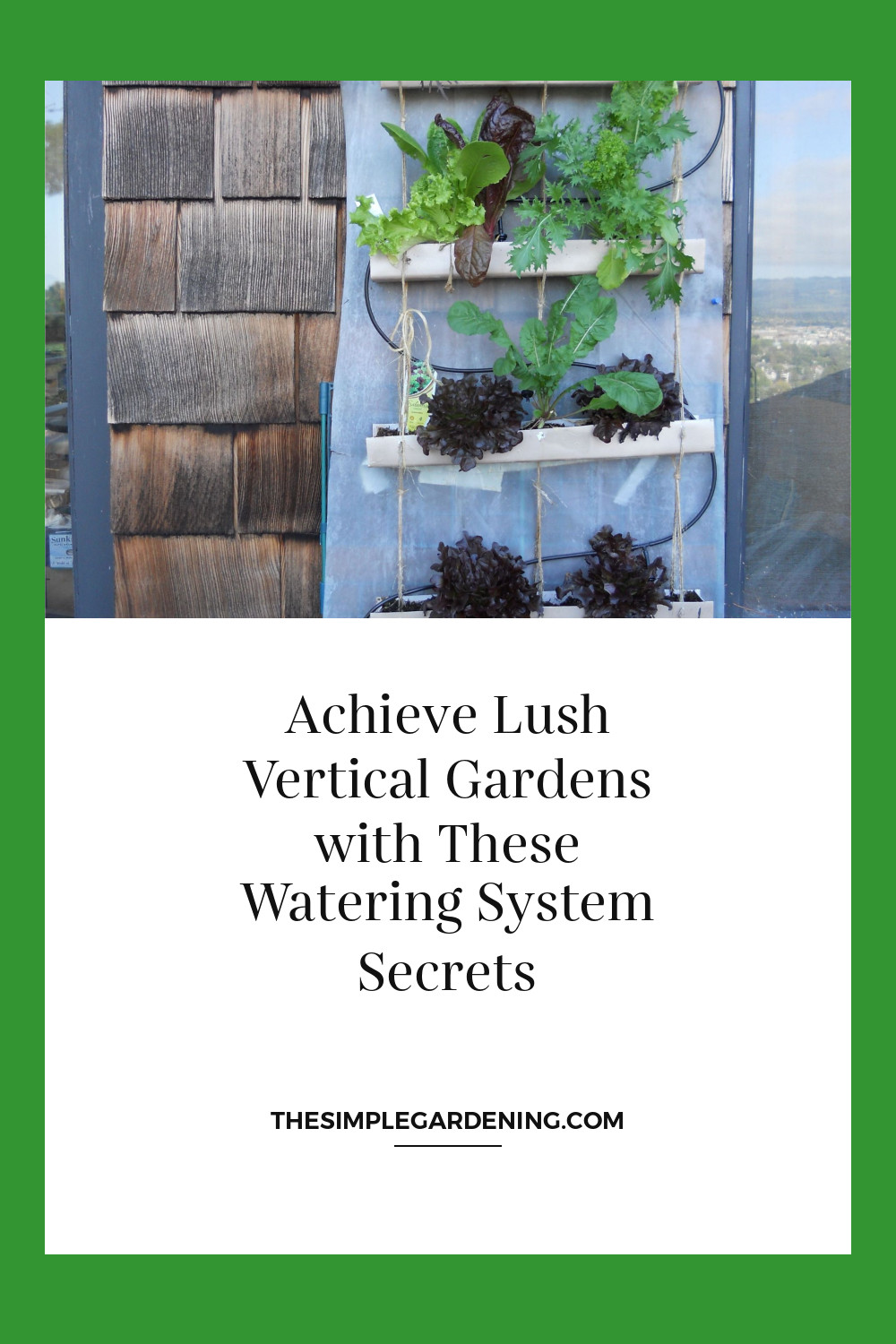Vertical gardens are a stunning way to bring greenery into urban spaces, but they come with unique challenges, especially when it comes to watering. This article dives into the world of vertical garden watering systems, providing you with all the insights, tips, and practical advice to ensure your vertical garden thrives.
Introduction to Vertical Garden Watering Systems
Vertical gardens, also known as living walls, have become increasingly popular in urban environments. They bring nature into spaces where traditional gardening isn’t feasible. However, maintaining these gardens requires efficient watering systems to ensure all plants receive the necessary hydration.
Table: Key Elements of Vertical Garden Watering Systems
| Element | Description | Importance |
|---|---|---|
| Water Reservoirs | Storage tanks for water | Ensure a consistent water supply |
| Pumps | Devices to move water through the system | Facilitate water distribution |
| Tubing | Channels through which water travels | Connect all parts of the watering system |
| Drippers | Components that release water to plants | Provide precise watering to each plant |
| Controllers & Sensors | Devices to monitor and regulate watering | Automate and optimize watering schedules |
Importance of Proper Water Management
Proper water management in vertical gardens is crucial to prevent issues such as waterlogging, root rot, and nutrient deficiency. It ensures plants receive the right amount of water at the right times, promoting healthy growth.
Benefits of Efficient Water Management
- Healthier Plants: Adequate water supply supports robust plant growth.
- Water Conservation: Efficient systems reduce water wastage.
- Cost Savings: Optimized water use lowers utility bills.
- Environmental Benefits: Reduces the ecological footprint of urban gardening.
Table: Consequences of Poor Water Management
| Issue | Cause | Effect on Plants |
|---|---|---|
| Overwatering | Excessive water supply | Root rot, fungal diseases |
| Underwatering | Insufficient water supply | Wilting, nutrient deficiency |
| Inconsistent Watering | Irregular watering schedules | Stress, uneven growth |
| Poor Drainage | Inadequate water outflow | Waterlogging, root damage |

Source Image: www.pinterest.com
Overview of Vertical Garden Concepts
Vertical gardens transform blank walls into lush, green landscapes. These gardens can be as simple as a few potted plants hung on a wall or as complex as a fully automated living wall system.
Types of Vertical Gardens
- Green Walls: Integrated systems with soil, water, and plants.
- Hydroponic Walls: Soil-less systems where plants grow in a nutrient solution.
- Modular Systems: Prefabricated panels that can be assembled into a vertical garden.
Table: Types of Vertical Gardens and Their Features
| Type | Features | Ideal For |
|---|---|---|
| Green Walls | Soil-based, requires good irrigation | Decorative indoor/outdoor spaces |
| Hydroponic Walls | Soil-less, uses nutrient solutions, highly efficient | Urban areas with space constraints |
| Modular Systems | Prefabricated panels, easy to install and maintain | DIY enthusiasts, small-scale projects |
Benefits of Vertical Garden Watering Systems
Watering systems for vertical gardens provide several benefits that manual watering cannot match.
Advantages
- Consistency: Delivers water uniformly across all plants.
- Efficiency: Saves time and effort compared to manual watering.
- Scalability: Suitable for both small and large installations.
- Automation: Advanced systems can be automated for optimal performance.
Table: Benefits of Automated Watering Systems
| Benefit | Description | Impact |
|---|---|---|
| Consistency | Uniform water distribution | Even plant growth |
| Time-Saving | Reduces manual watering efforts | More time for other gardening tasks |
| Customization | Adjustable settings for different plant needs | Healthier, tailored plant care |
| Water Efficiency | Minimizes water waste through precise delivery | Lower water bills, sustainable gardening |
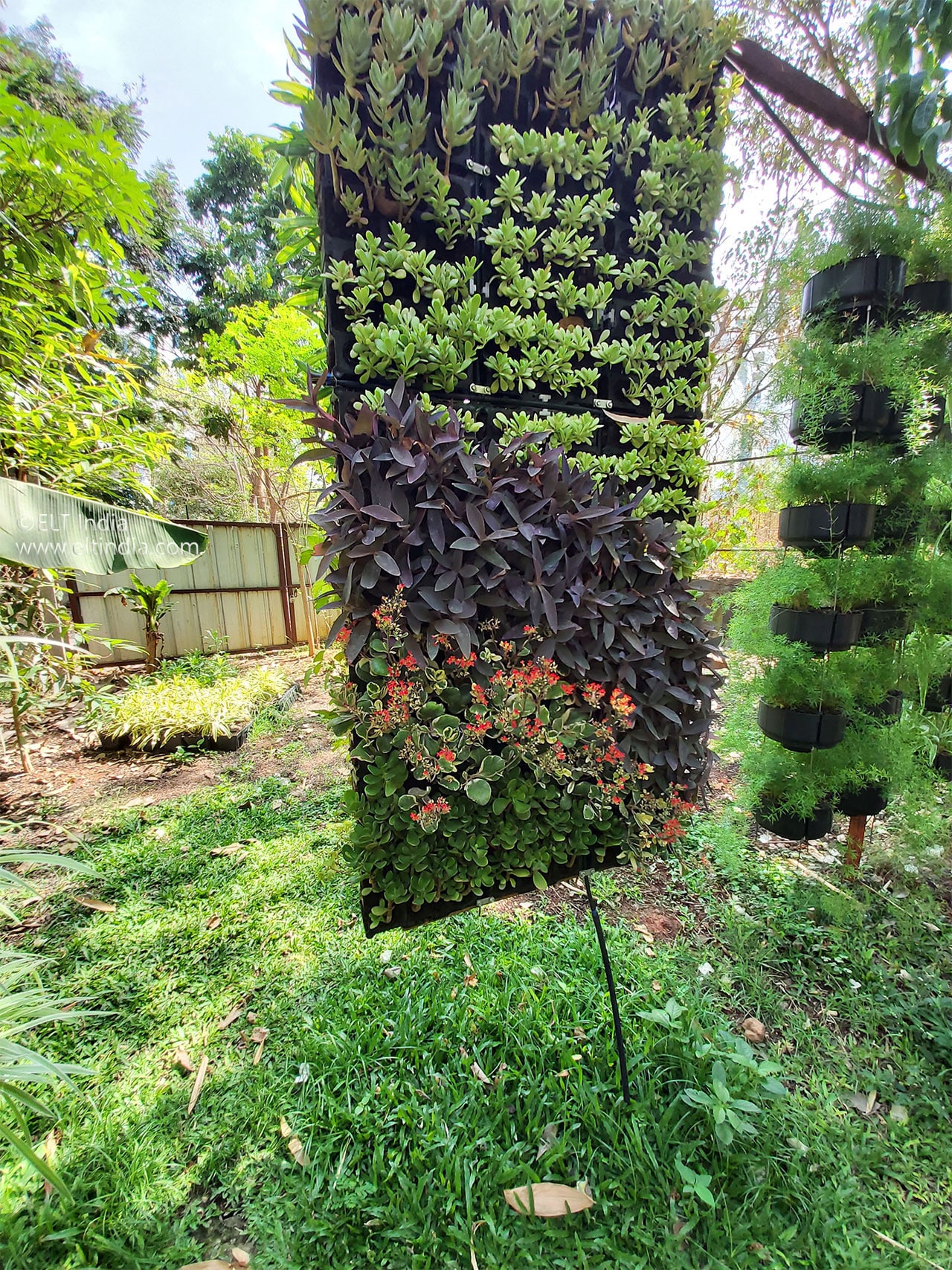
Source Image: eltindia.com
Types of Vertical Garden Watering Systems
There are several types of watering systems suitable for vertical gardens, each with its own set of features and benefits.
Drip Irrigation Systems
Drip irrigation involves a network of tubes and emitters that deliver water directly to the plant roots. It’s highly efficient and reduces water waste.
Table: Components of Drip Irrigation Systems
| Component | Function | Benefit |
|---|---|---|
| Main Line | Distributes water from the source | Ensures water reaches all parts of the system |
| Emitters | Release water directly to the roots | Precise watering, reduces evaporation |
| Filters | Remove impurities from the water | Prevents clogging of emitters |
| Pressure Regulators | Control water pressure | Consistent flow rate, protects system components |
Hydroponic Systems
Hydroponic systems grow plants without soil, using a nutrient-rich water solution. These systems are highly efficient and support rapid plant growth.
Table: Hydroponic System Components
| Component | Function | Benefit |
|---|---|---|
| Reservoir | Holds the nutrient solution | Provides a constant supply of nutrients |
| Pump | Circulates the nutrient solution | Ensures even distribution to all plants |
| Grow Medium | Supports plant roots | Allows efficient nutrient uptake |
| Aerator | Adds oxygen to the solution | Promotes healthy root development |
Wicking Systems
Wicking systems use a wick to draw water from a reservoir to the plant roots through capillary action. They are simple, low-cost, and effective for small-scale vertical gardens.
Table: Wicking System Components
| Component | Function | Benefit |
|---|---|---|
| Wick | Transfers water from reservoir to plants | Low maintenance, passive watering |
| Reservoir | Stores water for the system | Provides a steady water supply |
| Growing Medium | Supports plant roots and facilitates wicking | Ensures consistent moisture availability |
| Containers | Hold plants and growing medium | Simple setup, easy to manage |
Manual Watering Techniques
Manual watering involves watering plants by hand using watering cans or hoses. While labor-intensive, it allows for close monitoring of plant health.
Table: Manual Watering Techniques
| Technique | Description | Suitable For |
|---|---|---|
| Watering Cans | Hand-held containers for pouring water | Small gardens, detailed care |
| Hose Watering | Direct watering using a hose | Larger installations, flexible use |
| Spot Watering | Targeted watering for specific plants | Plants with unique water needs |
| Soaking | Deep watering to ensure thorough hydration | Established plants, drought conditions |
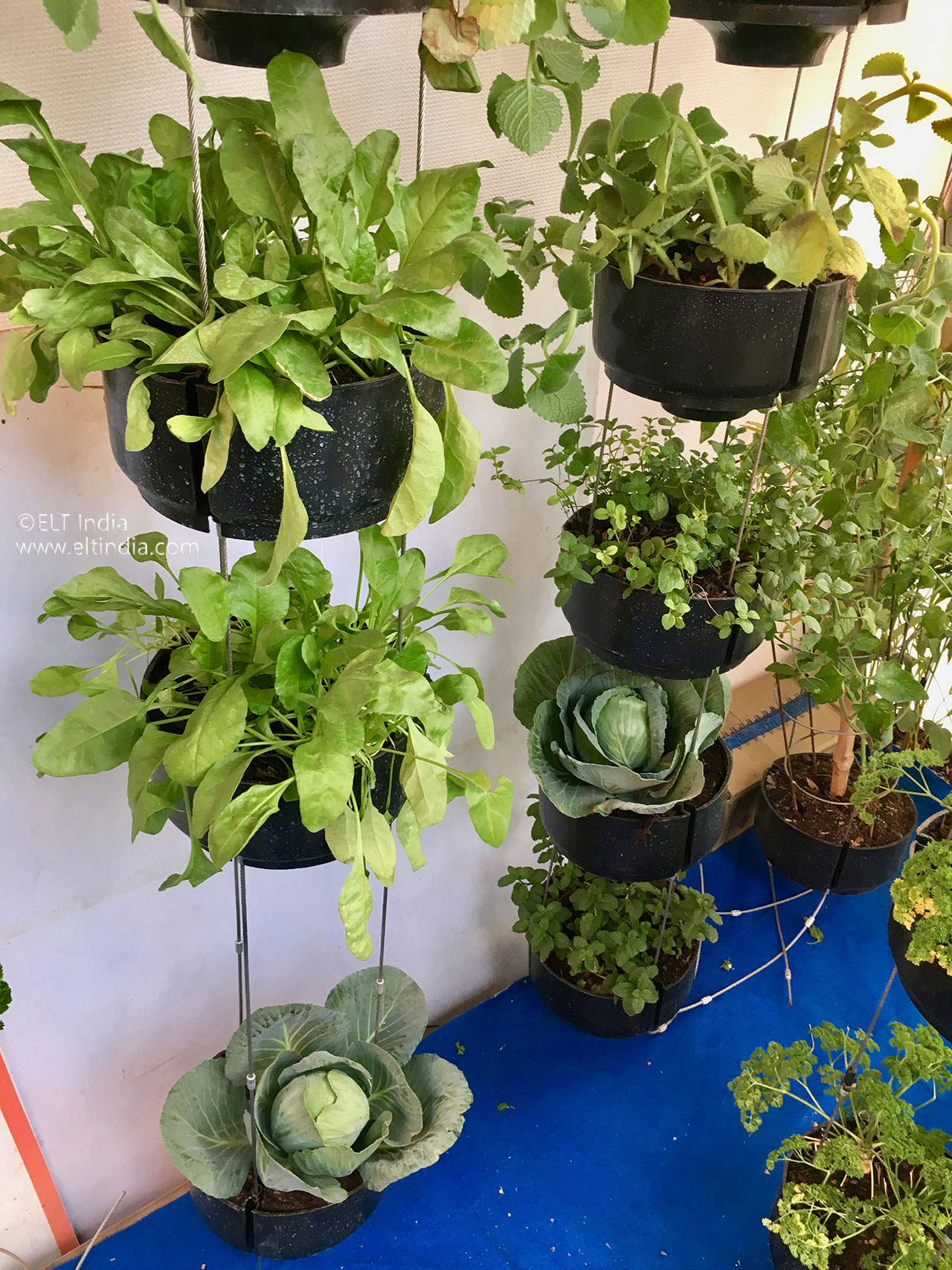
Source Image: eltindia.com
Components of a Vertical Garden Watering System
Understanding the components of a vertical garden watering system is crucial for designing and maintaining an effective setup.
Water Reservoirs and Tanks
Water reservoirs store the water supply for the garden. They can range from small containers to large tanks depending on the size of the installation.
Table: Types of Water Reservoirs
| Type | Capacity | Ideal For |
|---|---|---|
| Small Containers | Up to 10 liters | Small vertical gardens, indoor setups |
| Medium Tanks | 10-100 liters | Medium-sized installations, balcony gardens |
| Large Tanks | Over 100 liters | Large vertical gardens, commercial projects |
| Rain Barrels | Varies | Sustainable water harvesting, outdoor gardens |
Pumps and Timers
Pumps move water through the system, while timers control the watering schedule, ensuring plants get water when needed without manual intervention.
Table: Types of Pumps and Timers
| Type | Function | Benefit |
|---|---|---|
| Submersible Pumps | Placed inside the reservoir to pump water | Efficient, space-saving |
| External Pumps | Located outside the reservoir, connected via tubing | Higher capacity, easier maintenance |
| Mechanical Timers | Simple, clock-based watering schedules | Easy to set up, affordable |
| Digital Timers | Programmable with precise control | Flexible, customizable schedules |
Tubing and Drippers
Tubing connects all parts of the watering system, while drippers release water to the plants.
Table: Types of Tubing and Drippers
| Component | Function | Benefit |
|---|---|---|
| Main Tubing | Transports water from the reservoir | Connects the entire system |
| Branch Tubing | Divides water to different sections | Customizable distribution |
| Standard Drippers | Emit water at a fixed rate | Consistent watering |
| Adjustable Drippers | Allow for varying water flow | Tailored to specific plant needs |
Sensors and Controllers
Sensors and controllers automate the watering process by monitoring soil moisture and adjusting water delivery accordingly.
Table: Types of Sensors and Controllers
| Type | Function | Benefit |
|---|---|---|
| Soil Moisture Sensors | Measure moisture levels in the soil | Prevent overwatering, optimize water use |
| Weather Sensors | Monitor weather conditions to adjust watering schedules | Respond to environmental changes |
| Smart Controllers | Integrate with sensors for automated control | Precision watering, remote access |
| Basic Controllers | Basic timers and controllers for manual scheduling | Affordable, easy to use |
![]()
Source Image: prettyhandygirl.com
Vertical Garden Watering Systems
Designing a Vertical Garden Watering System
Designing an effective vertical garden watering system involves careful planning to meet the specific needs of your plants and space.
Assessing Water Needs of Plants
Different plants have varying water requirements based on factors such as species, size, and stage of growth. Understanding these needs is crucial for designing an efficient watering system.
Table: Water Requirements of Common Plants
| Plant | Water Needs | Ideal Watering Schedule |
|---|---|---|
| Succulents | Low, drought-tolerant | Infrequent, deep watering |
| Leafy Greens | Moderate | Regular, even moisture levels |
| Flowering Plants | Moderate to high | Consistent moisture, especially during flowering |
| Herbs | Moderate | Regular watering, avoid waterlogging |
Determining System Capacity
Calculating the water requirements of your vertical garden helps determine the capacity needed for reservoirs, pumps, and tubing.
Table: Calculating Water Requirements
| Factor | Calculation | Example |
|---|---|---|
| Plant Water Needs | Average water consumption per plant | Succulents: 50ml/day per plant |
| Number of Plants | Total number of plants in the garden | 20 succulents, 10 leafy greens, 5 flowering plants |
| Total Water Usage | Multiply water needs by the number of plants | (20 * 50ml) + (10 * 100ml) + (5 * 150ml) = 2500ml |
Layout and Installation Planning
Mapping out the layout of your vertical garden and planning the installation of watering components ensures efficient water distribution and easy maintenance.
Table: Layout Considerations
| Aspect | Consideration | Importance |
|---|---|---|
| Sunlight Exposure | Position plants based on sunlight availability | Prevent scorching or shading |
| Accessibility | Ensure easy access for maintenance and repairs | Facilitate regular inspections |
| Water Source | Locate reservoirs and pumps near water source | Minimize tubing length and water loss |
| Drainage | Incorporate drainage systems to prevent water buildup | Prevent waterlogging and root rot |
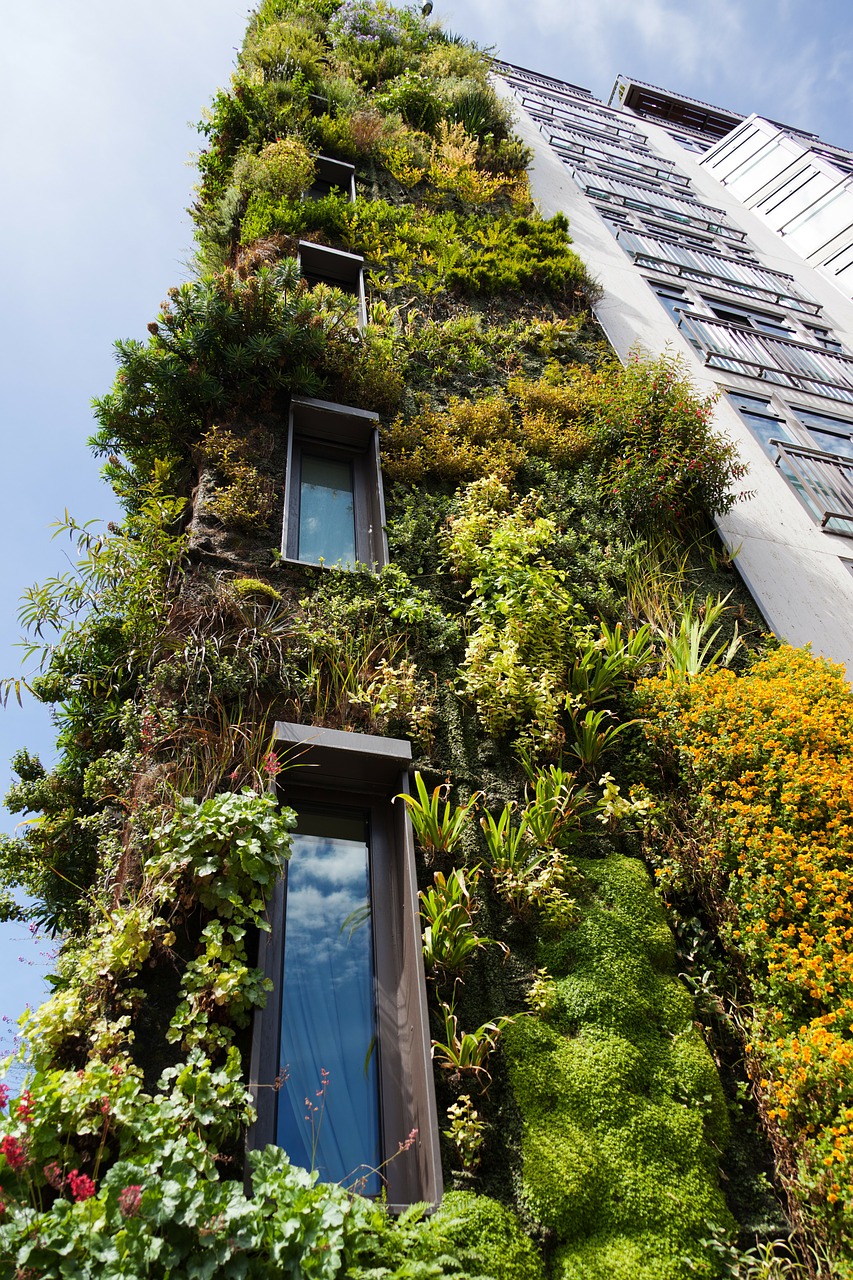
Source Image: morningchores.com
Choosing the Right Watering System for Your Vertical Garden
Selecting the appropriate watering system depends on various factors, including plant type, garden size, and location.
Factors to Consider
- Plant Type: Different plants have unique watering needs.
- Garden Size: Larger gardens may require more robust watering systems.
- Location: Indoor and outdoor environments have different environmental conditions.
Table: Considerations for Choosing a Watering System
| Factor | Consideration | Impact |
|---|---|---|
| Plant Type | Tailor watering system to suit specific plant needs | Ensure optimal plant health |
| Garden Size | Scale system components to match garden dimensions | Prevent under- or overwatering |
| Location | Adapt system for indoor or outdoor environments | Protect components from weather damage |
| Budget | Consider initial investment and long-term costs | Balance cost with system features and benefits |
Comparing Different Systems
Each type of watering system has its pros and cons, making it essential to compare options before making a decision.
Table: Pros and Cons of Watering Systems
| System | Pros | Cons |
|---|---|---|
| Drip Irrigation | Precise watering, efficient | Requires careful installation and maintenance |
| Hydroponic | Soil-less, rapid growth | Higher initial cost, complex setup |
| Wicking | Simple, low-cost | Limited scalability, may not suit all plant types |
| Manual Watering | Inexpensive, hands-on control | Labor-intensive, inconsistent watering |
Installation of Vertical Garden Watering Systems
Proper installation is critical to the functionality and longevity of your vertical garden watering system.
Step-by-Step Installation Guide
- Prepare the Wall: Clean and prepare the wall surface for mounting.
- Install Reservoirs: Attach water reservoirs or tanks securely to the wall.
- Lay Tubing: Lay out main and branch tubing according to the planned layout.
- Connect Components: Attach pumps, timers, and drippers to the tubing as per design.
- Test System: Run a test to ensure all components are functioning correctly.
Common Installation Challenges and Solutions
- Leakage: Use waterproof seals and connectors to prevent leaks.
- Uneven Watering: Adjust tubing layout and dripper placement to achieve uniform watering.
- Clogging: Install filters to prevent clogging of emitters and drippers.
- Power Supply: Ensure access to power sources for pumps and timers.
Safety and Efficiency Tips
- Electrical Safety: Use waterproof and insulated components for electrical connections.
- Water Conservation: Optimize watering schedules to minimize water waste.
- Regular Maintenance: Schedule routine inspections and cleaning to keep the system running smoothly.
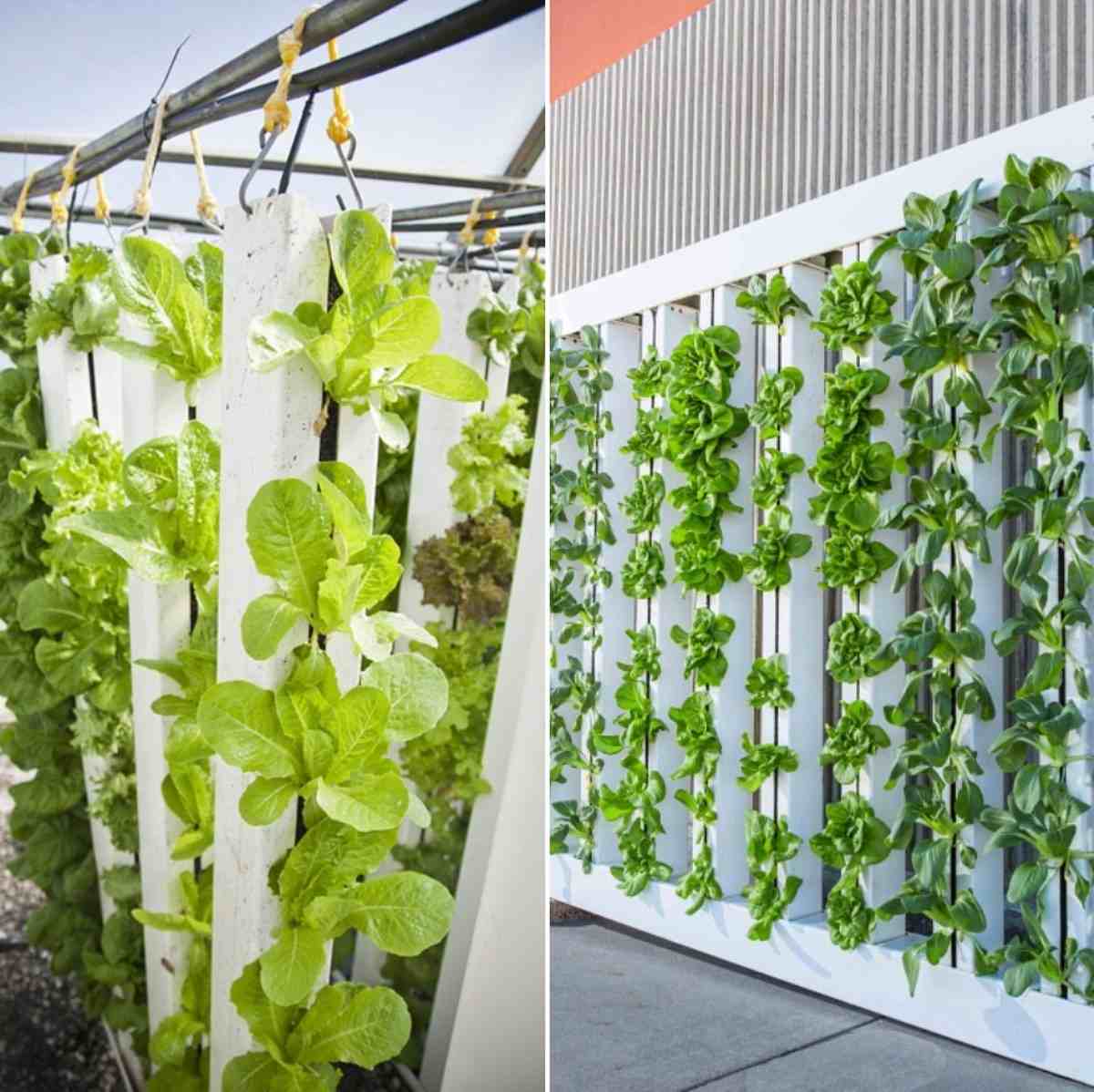
Source Image: gardeningtips.in
Automating Your Vertical Garden Watering System
Automation simplifies the maintenance of your vertical garden, ensuring plants receive consistent care without constant manual intervention.
Benefits of Automation
- Consistency: Maintains a regular watering schedule.
- Efficiency: Saves time and effort on manual watering tasks.
- Precision: Delivers the right amount of water to each plant based on its needs.
Types of Automated Systems
- Timer-Based: Basic systems controlled by timers for scheduled watering.
- Sensor-Based: Advanced systems that adjust watering based on environmental conditions and soil moisture levels.
Setting Up Timers and Sensors
- Placement: Position sensors at root level for accurate soil moisture readings.
- Programming: Program timers to water at optimal times based on plant needs and weather conditions.
- Calibration: Calibrate sensors regularly to ensure accurate readings.
Water Conservation Techniques
- Rain Sensors: Pause watering during rainfall to prevent water waste.
- Drip Irrigation: Delivers water directly to plant roots, minimizing evaporation.
- Mulching: Covering soil with mulch helps retain moisture and reduce water loss.

Source Image: gardeningheavn.com
Vertical Garden Watering Systems
Identifying and Fixing Common Issues
- Leak Detection: Monitor for signs of water leakage, such as damp patches or water stains.
- Clogged Emitters: Unclog drippers and emitters using a pin or a gentle blast of water.
- Pump Malfunctions: Check for obstructions in the pump and ensure proper electrical connections.
- Sensor Calibration: Calibrate soil moisture sensors regularly to maintain accuracy.
Ensuring System Longevity
- Quality Components: Invest in high-quality materials and components to ensure durability.
- Regular Inspections: Conduct routine checks to identify potential problems early.
- Proper Storage: Protect components from extreme weather conditions when not in use.
- Seasonal Maintenance: Adjust system settings and components as needed with changing seasons.
DIY Vertical Garden Watering Systems
For those with a knack for DIY projects, creating a custom vertical garden watering system can be both rewarding and cost-effective.
Materials Needed for DIY Projects
- PVC Pipes: For constructing main and branch tubing.
- Drip Emitters: To deliver water to plants.
- Pump: To circulate water through the system.
- Timer: For automated watering schedules.
- Containers: For holding plants and growing medium.
Simple DIY Watering System Ideas
- PVC Drip System: Create a network of PVC pipes with drippers attached at intervals.
- Bottle Irrigation: Repurpose plastic bottles as reservoirs with drip emitters for watering.
- Gravity-Fed System: Utilize gravity to distribute water from elevated reservoirs to plants below.
- Capillary Matting: Use capillary matting to wick water from reservoirs to plant roots.
Cost-Effective Alternatives
- Reuse Materials: Repurpose household items like plastic containers and tubing for your system.
- DIY Timers: Build simple irrigation timers using Arduino or Raspberry Pi boards.
- Homemade Filters: Create makeshift filters using sponges or mesh to prevent clogs.
Integrating Fertilization with Watering Systems
Fertigation, the process of delivering fertilizers through irrigation systems, maximizes nutrient uptake by plants.
Fertigation Techniques
- Liquid Fertilizers: Dilute liquid fertilizers and inject them into the watering system for even distribution.
- Water-Soluble Powders: Dissolve water-soluble fertilizers in the irrigation water for application.
Choosing the Right Fertilizer for Your System
- Balanced Formulations: Select fertilizers with balanced NPK ratios suitable for the plants in your garden.
- Slow-Release Options: Opt for slow-release fertilizers to provide nutrients gradually over time.
Balancing Water and Nutrient Delivery
- Monitoring Nutrient Levels: Regularly test soil and water to ensure proper nutrient balance.
- Adjusting Fertilization: Fine-tune fertilizer dosages based on plant response and seasonal requirements.
Case Studies and Examples
Examining successful vertical garden watering systems provides valuable insights and inspiration for designing your own.
Successful Vertical Garden Watering Systems
- Eden Project, UK: Utilizes a combination of drip irrigation and rainwater harvesting to sustain diverse plant species.
- One Central Park, Australia: Incorporates a hydroponic system with automated fertigation for high-rise greenery.
Lessons from Urban Vertical Gardens
- Limited Space: Vertical gardens maximize greenery in urban environments with limited land availability.
- Resource Efficiency: Automated watering systems optimize water and nutrient use, essential in densely populated areas.
Innovative Solutions from Around the World
- Singapore Supertrees: Vertical gardens integrated with rainwater collection and recycled water systems.
- Vertical Farms in Japan: Utilize hydroponic systems with LED lighting for year-round cultivation.
Environmental and Economic Impact
Efficient vertical garden watering systems offer environmental sustainability and economic benefits.
Reducing Water Waste
- Precise Watering: Targeted watering reduces runoff and evaporation, conserving water resources.
- Recycled Water: Utilizing recycled or harvested rainwater minimizes reliance on mains water.
Economic Benefits of Efficient Watering
- Lower Utility Bills: Reduced water consumption leads to lower water bills for garden owners.
- Long-Term Savings: Investing in efficient systems pays off in reduced maintenance and replacement costs.
Environmental Sustainability and Vertical Gardens
- Biodiversity: Vertical gardens support biodiversity by providing habitat for pollinators and birds.
- Air Quality: Greenery improves air quality by absorbing pollutants and releasing oxygen.
Technology and Innovations in Watering Systems
Advancements in technology offer smart solutions for managing vertical garden watering.
Smart Irrigation Controllers
- Wi-Fi Connectivity: Enables remote monitoring and control via smartphone apps or web interfaces.
- Data Analytics: Analyzes environmental data to optimize watering schedules and conserve water.
Advanced Sensors and Monitoring Tools
- Soil Moisture Sensors: Measure soil moisture levels to prevent over- or under-watering.
- Weather Stations: Monitor weather conditions to adjust watering schedules accordingly.
Future Trends in Vertical Garden Water Management
As technology continues to evolve, vertical garden watering systems will become more sophisticated and adaptable.
Adapting Watering Systems for Different Climates
- Climate-Specific Solutions: Develop tailored systems for tropical, arid, and temperate climates.
- Seasonal Adjustments: Automated systems adjust watering schedules based on seasonal variations.
Vertical Garden Watering for Urban Spaces
- Challenges of Urban Gardening: Address issues such as limited space, pollution, and access to water resources.
- Compact System Designs: Develop compact, space-saving systems for urban balconies and rooftops.
Enhancing Urban Aesthetics with Vertical Gardens
- Green Infrastructure: Vertical gardens contribute to urban beautification and improve quality of life.
- Architectural Integration: Integrate greenery into building design for seamless urban landscapes.
Educational and Community Projects
Vertical gardens serve as educational tools and community-building initiatives, promoting awareness and sustainable practices.
Teaching Water Management Through Vertical Gardens
- Hands-On Learning: Engage students in practical gardening activities to teach water conservation and plant care.
- Environmental Education: Raise awareness about the importance of green spaces and sustainable living practices.
Community Garden Initiatives
- Community Engagement: Bring people together through collaborative gardening projects in public spaces.
- Food Security: Grow fresh produce in urban gardens to address food insecurity and promote healthy eating.
Promoting Awareness and Sustainable Practices
- Public Outreach: Organize workshops, seminars, and events to educate the community about vertical gardening and water conservation.
- Policy Advocacy: Advocate for policies that support green infrastructure and sustainable water management in urban areas.
Vertical garden watering systems play a vital role in ensuring the health and vitality of urban green spaces. By implementing efficient and innovative watering solutions, we can create sustainable, thriving environments that benefit both people and the planet. Whether you are a novice gardener or a seasoned horticulturist, understanding the principles and practices of vertical garden watering systems is essential for success. By incorporating the right components, techniques, and technologies, you can create flourishing vertical gardens that not only beautify urban landscapes but also contribute to environmental sustainability and community well-being.
In conclusion, mastering vertical garden watering systems requires a combination of knowledge, creativity, and practical experience. By embracing the principles outlined in this comprehensive guide, you can design, install, and maintain watering systems that nurture vibrant greenery in any space, from small balconies to sprawling urban developments. So, roll up your sleeves, get your hands dirty, and embark on the journey of vertical gardening with confidence and enthusiasm.

